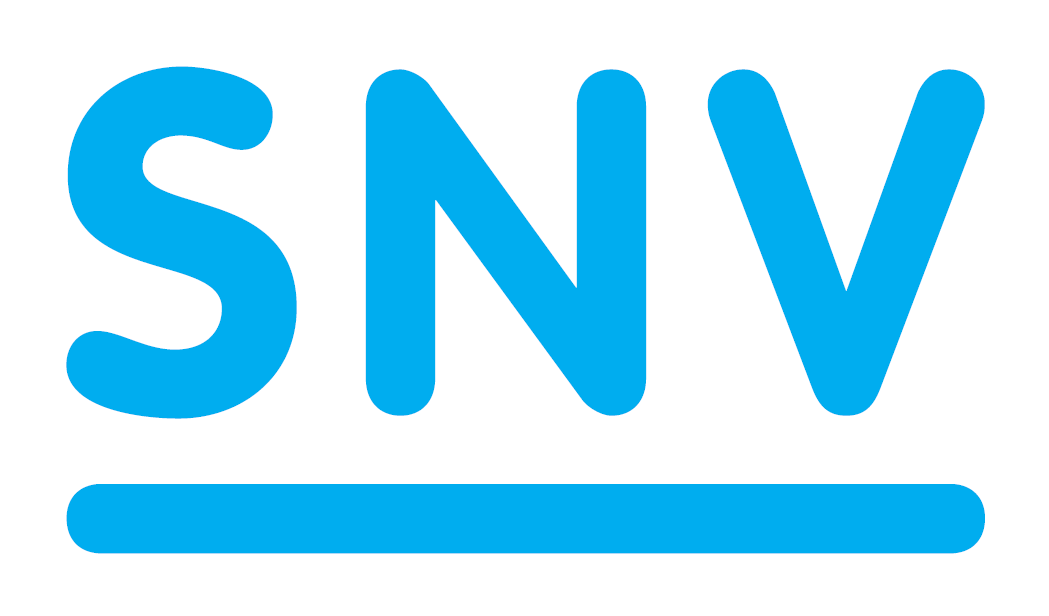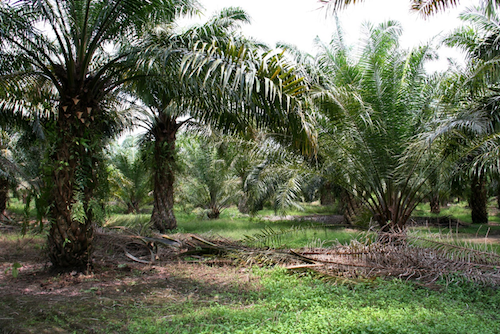Budidaya Kelapa Sawit Berkelanjutan / Penanganan sawit dura
Download: Module 1: Planting Material
Every farmer needs to know what kind of palms he has in his plantation, so that he can make the right decisions about how to manage his plantations. Farmers that have dura and/or pisifera palms need to be aware of the problems that they could have in the future and think about possible solutions.
Having dura palms in a plantation is not good for the following reasons:
|
Currently many mills in Indonesia do not check if the bunches are dura or tenera, or they give a small deduction only.
If a mill discovers the dura bunches and problems arise, there are several things the farmer can decide to do.
Contents
- 1 Option 1: Cut down all palms and replant
- 2 Option 2: Only cut down the dura and sterile palms and replace them with certified good-quality tenera palms
- 3 Option 3: Cut down the dura and sterile palms and replace them with another crop
- 4 Option 4: Leave all the palms, but apply fertilisers to the tenera palms only
- 5 Option 5: Leave all the palms and continue to manage them as if they were all good palms
- 6 Acknowledgements
Option 1: Cut down all palms and replant
If farmers have more than 1 percent dura palms in their plantation, it means that their planting material did not come from an official company and is not of excellent quality. The yields will probably not be as good as with excellent planting materials.
If farmers want to be sure that they can get maximum yields, they can decide completely to replant the fields that have dura palms.
| Advantages | Disadvantages |
|---|---|
|
- If farmers buy good certified seeds or seedlings, they can be certain that they will have good palms and very likely also good yields in the coming 25 years. |
- It is expensive to replant everything. |
Conclusion
In Indonesia, it is illegal to plant unofficial planting material. Therefore, it is recommended to replant all plantations that contain dura palms. But considering the costs, it is not always a good option for farmers to cut down all their palms, unless a problem with the mill is expected to occur soon. If there are many dura palms and the farmer can afford it and is willing to invest in best management in the new plantation, then cutting down all palms in the entire field (or in part of the field) and re-planting it with excellent material can be a good investment for the future. However, if there are only a few dura palms, then cutting down everything is probably too expensive for most farmers.
Cutting down all the palms is called ‘early replanting’ when the plantation is already old (more than 15—20 years after planting). This may be especially beneficial if the yield is already poor, or if many palms are affected by Ganoderma.
Option 2: Only cut down the dura and sterile palms and replace them with certified good-quality tenera palms
Once all the palms in the plantation have been checked, the farmer knows which are good and which are bad. The bad palms can be cut down and/or poisoned, all together or in groups over a longer period of time. The trunks of the dead palms must be cut into small pieces to decompose, otherwise they become a breeding ground for the rhinoceros beetle (Oryctes rhinoceros), which will attack the newly planted palms. A legume cover crop, such as mucuna, should be sown immediately after cutting, to improve soil fertility and cover the rotting wood. As soon as the legume cover crop has a good canopy (usually after 3 months), a new seedling can be planted in the hole where the previous palm was.
Note: If it is suspected that the palm was suffering from Ganoderma (stem rot), then:
- It is best to wait one year between cutting down the palm and replanting.
- The new seedling should be planted at least 2 m from the old palm planting point.
- The bole (i.e. the densest part of the roots; directly under and around the trunk) of the old palm should be dug up from the ground and spread in the inter-row.
- See Module 5: Pests and Diseases for more information on Ganoderma.
| Advantages | Disadvantages |
|---|---|
|
- After 3–4 years, all palms in the plantation will be tenera. |
- Part of the yield is lost for 3—4 years. |
Conclusion
For farmers that cannot cut down all the palms or that have only a few ‘bad’ palms, this approach may be useful. It is especially useful when palms are still young (less than 6 years from planting), because the shading of new seedlings is less.
Option 3: Cut down the dura and sterile palms and replace them with another crop
It may be that certified seedlings are not available or the price of the oil is not good. In this case, it is possible to cut down the dura and the sterile palms and plant another crop instead. It must be kept in mind, however, that the other crop should not grow taller than the oil palm, because then it will reduce the oil palm yield due to shading.
| Advantages | Disadvantages |
|---|---|
| - The remaining oil palms will be tenera, and can be harvested normally. - The yield of the remaining palms will increase, because they are no longer shaded by their neighbours. |
- If oil palm is the most profitable crop, then some of the profit will be lost. - The new crop can only be planted in the small patches where the old palms were (see: Figure 12). |
Conclusion
Whether or not this option is attractive depends on whether there is a shade-tolerant crop available that is (nearly) as profitable as oil palm. Planting another crop can be especially attractive in older plantations (more than 10 years from planting) because the shading will make the planting of young oil palms less profitable. This option can be combined with accelerated replanting five to ten years later.
Option 4: Leave all the palms, but apply fertilisers to the tenera palms only
If cutting down palms is not possible or desirable, it can also be decided to leave all the palms, but to apply fertilisers only the good tenera palms. There are two options: to harvest and sell the dura bunches separately (for a lower price), or mixed with the tenera bunches. If the mill discovers the dura bunches, then the price for all the bunches may drop, or it may become necessary to harvest and sell separately.
| Advantages | Disadvantages |
|---|---|
| - No palms need to be cut down. - The dura palms keep producing, and as long as the mill does not check, the bunches can be sold (though farmers should keep in mind that this is illegal, disadvantageous for the mill, and it may also cause serious problems for the farmer in the future). |
- It is not legal to keep the dura palms. - The problem of the dura and sterile palms is not solved. |
Conclusion
This option is simple, but it also has several serious disadvantages. It makes most sense in old plantations (more than 15 years after planting) where other options are not attractive. It can be combined with accelerated replanting after saving for a few years. This option may also be useful to prepare for other options, so that fertilisers are not wasted. Note: for long-term management of young plantations, this option is not a good one.
Option 5: Leave all the palms and continue to manage them as if they were all good palms
If the management is already not very intensive, and cutting down palms is not possible or desirable, it can be decided to leave all the palms and just manage them as if they were all the same. There are two options: to harvest and sell the dura bunches separately (for a lower price), or mixed with the tenera bunches. If the mill discovers the dura bunches, then the price for all the bunches may drop, or it may become necessary to harvest and sell separately.
| Advantages | Disadvantages |
|---|---|
| - It is easy, management can just continue ‘as usual’. - On the short term, the dura palms will keep providing bunches and income, as long as the mill does not check. |
- It is illegal to keep the dura palms. - The problem with the dura and sterile palms is not solved. |
Conclusion
This option is not really a solution and is only financially attractive if the mill does not separate dura and tenera bunches. This option may be useful in old plantations (more than 15 years after planting) that can be replanted soon. In practice, as long as the dura bunches can be sold to the mill as if they are tenera or with a small deduction only, most farmers are likely to select this option for their management.
Acknowledgements
The material from Dealing with dura palms is sourced from Smallholder Oil Palm Handbook and put together by Lotte Suzanne Woittiez (Wageningen Universit) and Haryono Sadikin, Sri Turhina, Hidayat Dani, Tri Purba Dukan, and Hans Smit (SNV) in August 2016. See Module 1: Planting Material for more information.





